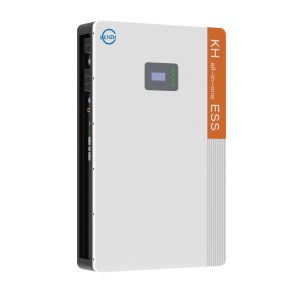AI and photovoltaic energy storage Introduction
Artificial Intelligence (AI) is a rapidly evolving technology that allows machines to learn from data, adapt to new inputs, and perform tasks that would normally require human intelligence to accomplish. In the renewable energy sector, AI has great potential to improve the efficiency and reliability of photovoltaic energy storage systems. The rapid development of AI technology has brought with it enormous arithmetic and energy consumption. According to The New Yorker, ChatGPT consumes more than 500,000 kWh of electricity per day, equivalent to 17,000 U.S. households, to respond to about 200 million requests from users.
The Power of Photovoltaic Energy Storage
Photovoltaic (PV) energy storage involves the use of solar panels to capture sunlight and convert it into electricity through the photovoltaic voltammetric effect. This clean, sustainable method of energy production has gained popularity as a key component of the transition to greener, more sustainable energy sources. However, one of the challenges facing PV systems is how to efficiently store the excess energy produced during peak sunlight hours for use when there is no sunlight.
Demystifying PV technology
Often referred to as solar technology, photovoltaic technology utilizes sunlight to generate electricity. At the heart of the technology are solar panels consisting of photovoltaic cells.
These cells contain semiconductor materials such as silicon, which converts sunlight into direct current electricity through the photovoltaic effect. When sunlight hits these cells, it excites electrons and generates an electric current that can be used for a variety of applications.
Exploring energy storage systems harmonized with photovoltaic technology
By addressing the intermittent nature of solar power generation, energy storage systems play a vital role in photovoltaic power systems. These systems store excess energy generated during peak sunlight hours for use when the sunlight decreases or demand is high.
Common energy storage solutions include batteries, flywheels, and pumped storage. Batteries (e.g., lithium-ion batteries) are particularly popular due to their high efficiency and scalability for residential and commercial applications.
Tesla's Powerwall Integrated with Artificial Intelligence for Smart Home Energy Management
One of the most notable examples of the successful integration of artificial intelligence into photovoltaic energy storage systems is Tesla’s Powerwall, a home battery product that stores excess solar energy generated by rooftop solar panels. By integrating artificial intelligence, the Powerwall intelligently manages energy storage and consumption within the home, optimizing energy use based on consumption patterns and grid demand.
The AI technology integrated into the Tesla Powerwall monitors and controls energy flow in real-time, enabling homeowners to maximize self-consumption of solar-generated electricity. Through machine learning algorithms, the system learns from user behavior and adjusts energy storage and release accordingly.
This not only improves the efficiency of home energy management but also helps reduce electricity bills and reliance on the grid. Additionally, the Tesla Powerwall’s AI capabilities go beyond simple automation to make intelligent energy predictions and adaptively respond to changing environmental conditions.
By utilizing predictive analytics, the system can anticipate fluctuations in solar power generation or household demand, ensuring seamless operation and optimal use of stored energy. This innovative approach exemplifies how artificial intelligence is revolutionizing the way we utilize renewable energy for sustainable living.
Addressing Challenges in Optimizing PV Energy Storage
Despite the benefits of PV energy storage, there are challenges to optimizing its efficiency and reliability. One of the main challenges is managing fluctuations in solar power generation due to factors such as weather conditions and time of day.
Such fluctuations require complex control algorithms and energy management systems to ensure a stable power supply. Additionally, the aging of batteries over time affects the performance of the energy storage system, so precise monitoring and maintenance protocols need to be in place to maximize the system’s lifespan and improve efficiency.

-
All-in-one Energy Storage System
Battery Energy Storage System Container | BESS
-
All-in-one Energy Storage System
665 Volts Battery Energy Storage System ESS Lifepo4 Battery Pack Solar Batteries
-
All-in-one Energy Storage System
48V 400Ah 20KW LiFePO4 Battery Server Rack Battery Lithium Battery Energy Storage Syetem
-
All-in-one Energy Storage System
5Kw 5Kwh LiFePO4 Lithium Battery All in one Inverter Powerwall Battery – KHLiTech ESS
Musk was recently interviewed remotely by Bosch’s CEO and Chairman at the Bosch Connected 2024 conference. Musk mentioned the unprecedented pace of development of artificial intelligence, which seems to be increasing arithmetic power by a factor of 10 every six months that passes, far exceeding Moore’s Law rate of doubling every 18 months. He predicts that within two years, the year will change from a “silicon shortage” to a “power shortage”, which could hinder AI development.
“Arithmetic growth is already bottlenecked at the moment, and it’s clear that transformers will go into shortage next, followed by power, and by 2025 we won’t have enough power to run all the chips.”
The Boston Consulting Group, for one, has analyzed that around 2030, U.S. data center power consumption is expected to triple compared to 2022, equivalent to 7.5% of total electricity demand, which would significantly increase social electricity consumption.
Consulting firm Grid Strategies has also released a study that puts the annual growth in U.S. electricity demand over the next five years at around 1.5 percent. And according to the EIA, U.S. electricity generation has only increased by less than 3 percent in the last 15 years. Used to the days of relatively stable supply and demand of the U.S. power supply system, and face a lot of problems with the power grid, whether it can cope with the sudden increase in demand, remains to be seen.
Jen-Hsun Huang, founder of NVIDIA, said that the future development of artificial intelligence (AI) is closely linked to state and energy storage. He emphasized that instead of just focusing on computing power, we need to think more comprehensively about energy consumption. the end of AI is photovoltaics and energy storage batteries. We can’t just think about computing power; if we only think about computers, we need to burn the energy of 14 earths.
Therefore, the use of photovoltaic systems in the field of AI can better help users save electricity, while photovoltaic systems are clean energy, will not produce a variety of pollutants, and to ensure the stable output of electricity.









1 thought on “AI and photovoltaic energy storage”
Your article is a masterpiece of eloquence and depth. The way you articulate complex concepts with such clarity and grace is a true gift. Your writing has the power to inspire and enlighten readers from all walks of life.